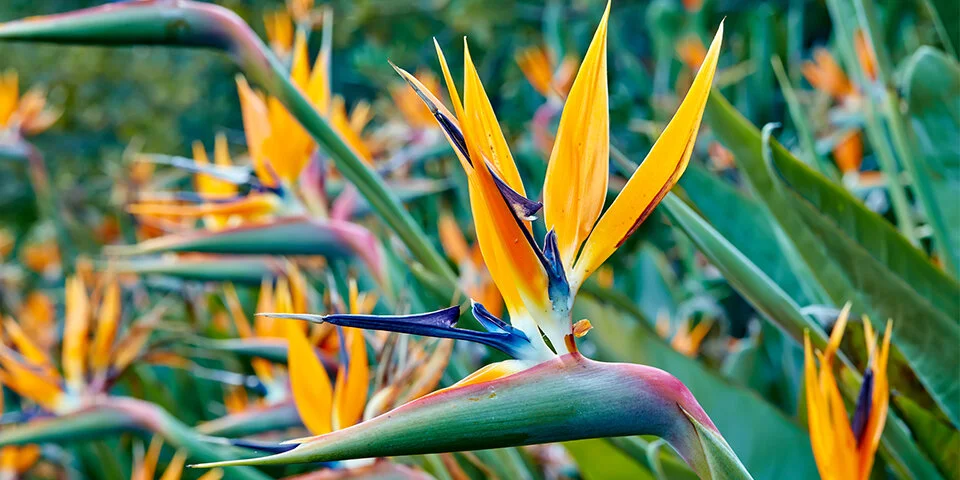South African bulbs from the Dawson garden include (left to right) Moraea (aka Homeria) elegans, and Geissorhiza monanthos, both of which bloom for only a few days each spring. The third is a ZygopetalumIn, similar to Z. Redvale ‘Pretty Ann," and bought at Trader Joe's.
In my earlier articles on closeup flower photography, I listed some “cardinal rules” that apply equally to conventional film and to digital cameras. Here they are again.
1) Work by available light in overcast conditions.
2) Use aperture priority with the smallest aperture (largest f-stop).
3) Use a tripod.
4) Use a neutral background to avoid distracting objects behind the subject.
The advanced software of the cellphone camera allows you to ignore rules 2 and 3 most of the time. For the serious photographer who wants full control of the camera, there are third party apps like Halide that do allow you to adjust variables like shutter speed and aperture, but the modern cellphone is so ‘smart’ that I find no need to use them. As for the tripod, I have a clamp that will let me mount my iPhone. With the delayed shutter action it will let you keep the camera very still and I would expect that would improve results in a very closeup situation. In practice, I’ve found that the image stabilizing software is so effective that I can’t see a difference between hand-held and on tripod shots of the same flower, even when they’re blown up on my 27-inch monitor.
The image stabilization offered by conventional digital cameras uses motion detectors in the lens or in the camera that move either the sensor or components of the lens to compensate for the motion. If the detector is in the camera the lens doesn’t need stabilization. Most cellphone cameras have a gyroscopic motion detector with software that moves the lens to compensate for camera motion. Some of the newer iPhones have “sensor-shift” image stabilization. The advantage of the latter is that it still works if you use one of the third party supplemental lenses available for your cellphone. However, I don’t think you’d want to use one of these for closeup flower photography. Suppliers of cellphone macro lenses extol their shallow depth of field with their “outstanding bokeh effect”. That’s exactly the opposite of what the flower photographer wants, as I’ve explained in the first article of this series.
Image stabilization corrects for motion of the camera but not of the subject. If you are photographing a flower out of doors in windy conditions you will need plenty of light and a fast shutter speed, and this is where the third party apps will be useful. You may also want to use “burst mode” in which a rapid series of shots is taken while you maintain pressure on the exposure button. You can select the one that shows the least effect of motion. Most of the time I move the plants in containers into the greenhouse where I have nice diffuse illumination. You can also snip the interesting part of the plant and position it indoors with a small vice of the type used to tie flies.
Even the best camera sensor can’t match the ability of the human eye to discern detail when there is a very large difference in the illumination of various parts of an image. Under very bright conditions the highlights will be washed out and the shadows uniform black. In the film era, darkroom processes like burning and dodging could mitigate the problem to a degree and analogous tools can be used with software editors to enhance underexposed and to reduce the brightness of burnt out parts of the image. Cellphone cameras use HDR (high dynamic range) software to correct for ‘contrasty’ conditions by combining several shots of the same scene, reducing exposure of the highlights and increasing it in the shadows. This gives you a better photo, but it’s nowhere as good as what you will get with ideal lighting conditions. Therefore I reiterate, do your outdoor flower photography in overcast conditions. Yes, if you’re on safari under a blazing sky in the Namib desert, you’ll have to accept conditions as they are. You may still be able to snip a piece from the plant and move it to a shaded area, or position yourself or a friend so your shadow covers the subject.
As for the fourth item on my list, it’s still desirable to hide distracting items from the background of the photo. I have a piece of black matte poster board that I can prop up behind the subject. After over twenty years of service it has become a bit battered and I find myself having to edit out the scrapes. One of these days I’ll cough up a bit of change for a new one.

